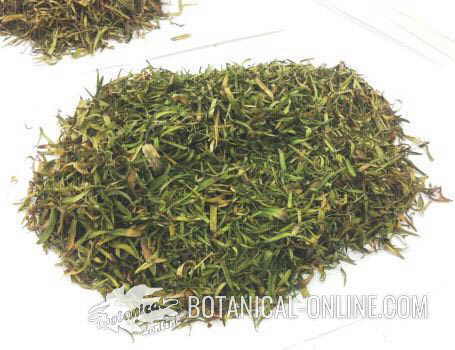Contents
- 1 Benefits of soybean oil
- 1.1 CHARACTERISTICS OF SOYBEAN OIL
- 1.2 What is soybean oil?
- 1.3 What is soybean oil like?
- 1.4 What does soybean oil contain?
- 1.5 What is soybean oil used for?
- 1.6 MEDICINAL PROPERTIES OF SOYBEAN OIL
- 1.7 How to use soybean oil in medicinal remedies or cosmetics?
- 1.8 Soybean oil for circulatory diseases
- 1.9 Is soybean oil good for arthritis?
- 1.10 Soybean oil, a healthy fat
- 1.11 Soybean oil for the nervous system
- 1.12 Drawbacks of soybean oil
Benefits of soybean oil
CHARACTERISTICS OF SOYBEAN OIL
What is soybean oil?
Soy oil is obtained from cold-pressing soybean, specifically from the seeds of this legume, but solvents can also be used for greater oil production and can be subjected to a refined, just as happens with olive oil.
It is the vegetable oil with a greatest production worldwide. It has a production of 20% based on the dried seed.
What is soybean oil like?
– This type of oil is transparent with a slightly yellow color somewhat reddish therefore.
– Its acidity values do not exceed 2 degrees.
– Its flavor is insipid and very soft.
What does soybean oil contain?
Its lipid content ranges about 88% of neutral lipids, made up of triglycerides, free sterols and fatty acids.
It also has 1.6% of glycolipids and almost 10% of phospholipids.
The composition of its fatty acids is mainly polyunsaturated because it contains about 50% of linoleic acid (omega 6) (See composition of soybean oil)
The other half of its contents is formed by oleic acid, (omega 9), which is monounsaturated; linolenic acid (omega 3) which in turn is polyunsaturated and saturated fatty acids, as palmitic and stearic.
* See composition of soybean oil
What is soybean oil used for?
Among the main uses of soybean oil, we have the following:
– Food uses of soybean oil
It is mainly used as a frying oil, either alone or mixed with other oils. It is very commonly useed in Chinese or Japanese cuisine,in its refined form, either in main dishes like margarine in fried desserts,, pastries, cookies or sauces.
It is also used as a food preservative.
– Curative and cosmetic uses of soybean oil
Soybean oil can also be used to cure some diseases. It also takes part as a component of many cosmetic products for skin health
MEDICINAL PROPERTIES OF SOYBEAN OIL
How to use soybean oil in medicinal remedies or cosmetics?
We must use soybean oil in its raw form, to maintain its properties, since refined oil will not have those properties because of its method of production.
Some drugs contain this oil as one of the main ingredients
For its intrinsic lubricating properties, we can use it as a facial or body moisturizer, makeup remover or even it can also be used as a laxative.
Soybean oil for circulatory diseases
For its major content of polyunsaturated fatty acids, especially linoleic acid (omega 6), its consumption may have beneficial effects on the circulatory system.
Soybean oil is highly recommended to prevent or treat cardiovascular diseases, such as atherosclerosis, thrombosis, heart disease, etc.
Is soybean oil good for arthritis?
For its content in omega 3, like rapeseed oil and wheat germ oil, soybean oil can help counteract inflammation in inflammatory diseases such as arthritis.
However, we must bear in mind that its content in omega 6 is higher than that of omega 3 and, therefore, it can have the opposite effect, being in this case proinflammatory.
Therefore, we must remember that, we should include in our meals other oils or foods with a higher proportion of omega-3 to achieve a balance The relatioship must be 4: 1 that is to say, a four times superior amount of omega 6 than omega 3.
Soybean oil, a healthy fat
Soybean oil is beneficial in helping to reduce cholesterol or triglycerides.
In pregnancy, we must provide a proper intake of these essential fatty acids, in order the fetus may receive high quality fats for its proper development.
Their positive properties in this sense is derived mainly from its content phosphatidylcholine or polyenylphosphatidylcholine, a phospholipid commonly known as lecithin.
Lecithin has emulsifying properties and, among its physiological attributes, there is the action of increasing the permeability of the membranes of our body and consequently, to increase the transfer of substances, so as to achieve the proper balance.
This component helps lower cholesterol levels, because it prevents it to be deposited in the arteries, which is the cause of diseases such as atherosclerosis or thrombosis.
Soybean oil for the nervous system
Soybean oil helps maintain a healthy state of our central nervous system, facilitating the nerve impulse and protecting the brain neurotransmitters, thus helping to avoid mental disorders or even disorders such as depression.
It also brings a high content of vitamin E in the form of tocopherols, which gives us its intrinsic antioxidant properties.
As a fatty medium, soybean oil also helps us in the proper absorption of other fat-soluble vitamins like vitamin A, vitamin K and vitamin D. For all these reasons, it is considered that its consumption can be very beneficial and preventive for our Health.
Drawbacks of soybean oil
Like all seed oils, it is obtained by solvent extraction and further refined always normally used. The extraction method makes it loose most of its properties: its content of lecithin, tocopherols, sterols, carotenoids and unsaponifiable components.
Due to its high content of polyunsaturated fatty acids, it is very susceptible to premature oxidation, so it should be properly stored, away from contact with air or light.
In the case of consuming margarines made with this type of oil, it is more than likely that they have been hydrogenated. In this case, fats act just as if they were saturated, so they can raise cholesterol levels of our body.
* Related information:
![]() More information about soy.
More information about soy.








